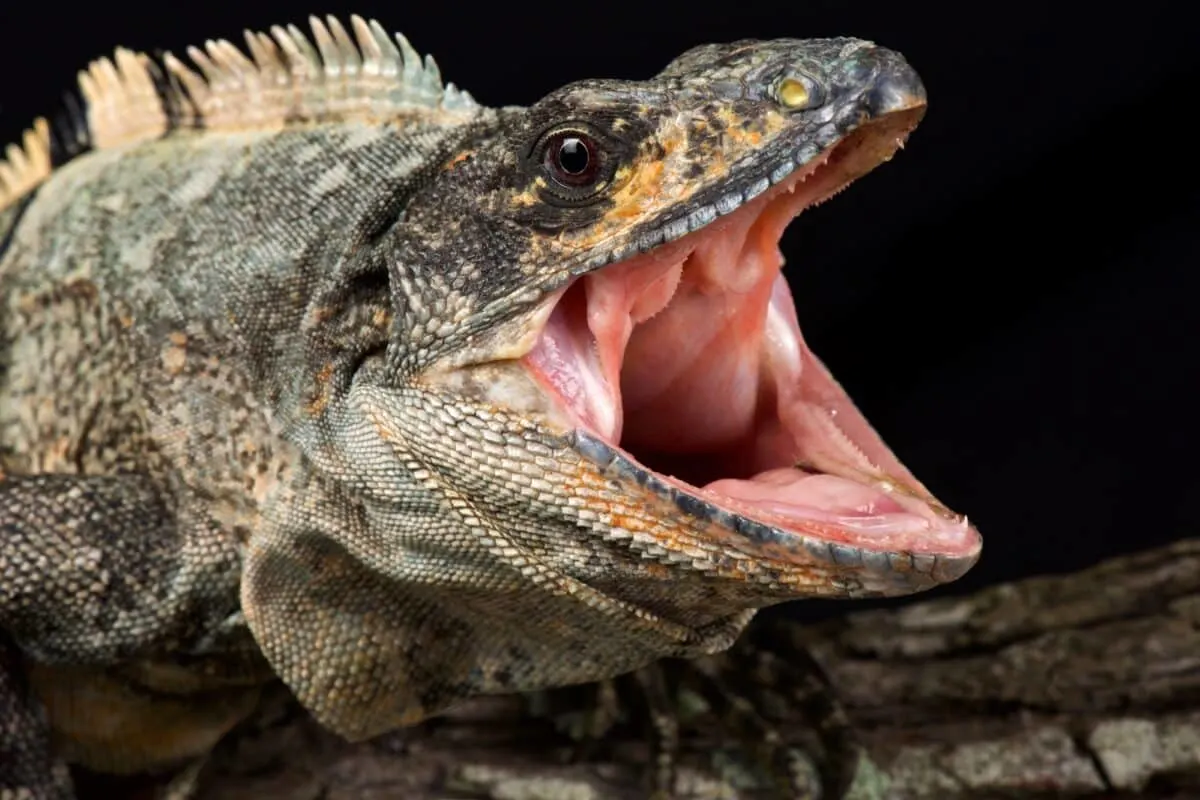A Spiny-Tailed Iguana bite isn’t venomous, but if bitten, the complications may become severe.

Spiny-tailed iguanas are fascinating creatures that inhabit various parts of the world, including parts of the Americas, Central America, and the Caribbean islands. While these reptiles are generally shy, they can become aggressive if threatened or provoked.
Unfortunately, their bite can pack a painful punch, leaving victims with deep wounds and potential infections. This article will explore the spiny-tailed iguana bite in greater detail, examining its causes, symptoms, and treatment options.
With a deeper understanding of the Spiny-Tailed bite, you can take steps to protect yourself while enjoying the beauty of these remarkable creatures.
Key Points
- Spiny-tailed iguanas are large, with males growing up to 5 feet long and weighing up to 10 pounds.
- They are primarily herbivorous, but also consume insects and small animals occasionally.
- Spiny-tailed iguanas have a lifespan of 10-15 years in captivity, influenced by various factors.
- They undergo rapid growth during their first year, reaching full adult size within 3-4 years.
- Spiny-tailed iguanas display unique behaviors, including territoriality and activity, requiring attention and interaction.
- Iguanas are not venomous, but they can carry bacteria like Salmonella, and their bites can be painful and lead to infection.
An Overview
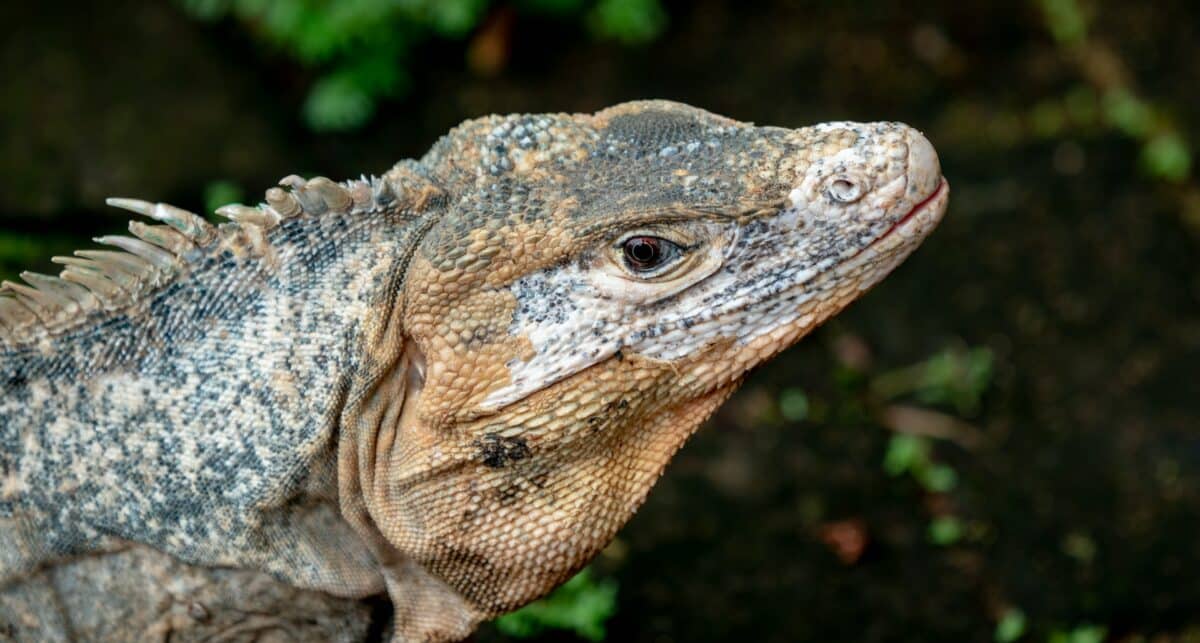
| Trait | |
|---|---|
| Length | 3-5 feet |
| Weight | 5-10 pounds |
| Diet | Herbivorous, primarily leafy greens, fruits, flowers, and vegetables |
| Suitability as a Pet | Can be suitable for experienced reptile keepers; requires specialized care and a spacious enclosure |
| Habitat | Native to Central and South America, found in various habitats including forests, deserts, rocky areas, and coastal regions |
| Colors | Coloration varies by species, but commonly includes shades of gray, black, brown, and green; some species may have vibrant markings or patterns |
Get to Know the Spiny-Tailed Iguana
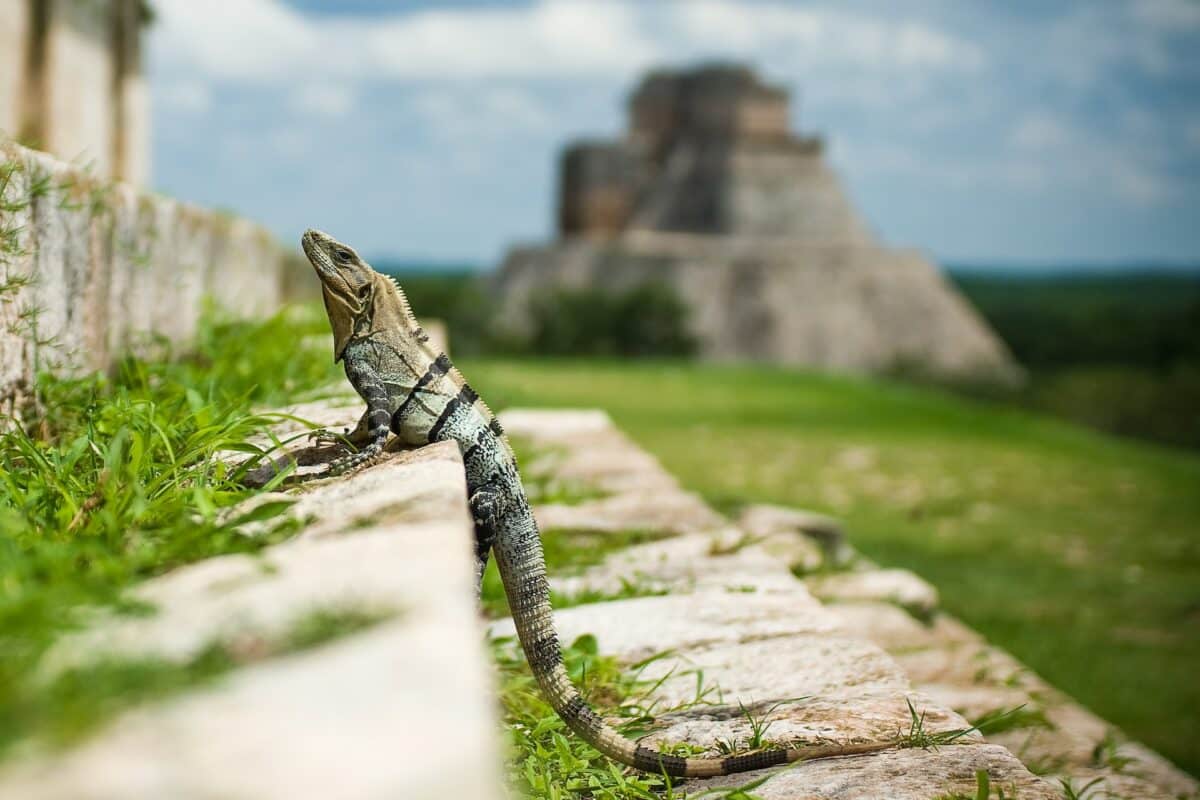
Spiny-tailed iguanas are a unique reptile species native to Central and South America. These captivating creatures have long been admired for their unique physical characteristics that set them apart from other iguana species.
If you’re thinking about getting a spiny-tailed iguana as a pet or want to learn more about them, there are some key physical characteristics that you should know about.
Another amazing reptile is the chicken snake – read about the different subspecies here.
Size
Spiny-tailed iguanas are some of the most giant iguanas in the world. Male iguanas can grow up to 5 feet long, while females are slightly smaller, usually around 3 feet in length. These lizards are also quite heavy, with males weighing up to 10 pounds and females weighing around 5 pounds.
Their large size means they need a lot of space to move around and thrive, making spiny-tailed iguanas unsuitable for tiny homes or apartments.
Diet
Spiny-tailed iguanas are primarily herbivores in the wild, feeding on various plants and fruits. They are also known to eat insects and small animals occasionally.
As pets, providing spiny-tailed iguanas with a balanced diet that includes plenty of leafy greens and vegetables, along with some fruits and protein supplements, is essential.
Behavior
Spiny-tailed iguanas are known for their unique behavior patterns, which can be fascinating and challenging for pet owners. These lizards are highly territorial and often display aggressive behaviors if they feel threatened or uncomfortable.
They are also known to be very active, spending a lot of time climbing and exploring their environment. As such, spiny-tailed iguanas need a lot of attention and interaction from their owners to keep them stimulated and happy.
Lifespan of Spiny-Tailed Iguanas
On average, spiny-tailed iguanas have a lifespan of 10 to 15 years in captivity, although with proper care, some individuals have been known to live up to 20 years or more. It’s important to note that their lifespan can be influenced by various factors such as diet, environment, and overall health.
How Fast Do Spiny-Tailed Iguanas Grow?
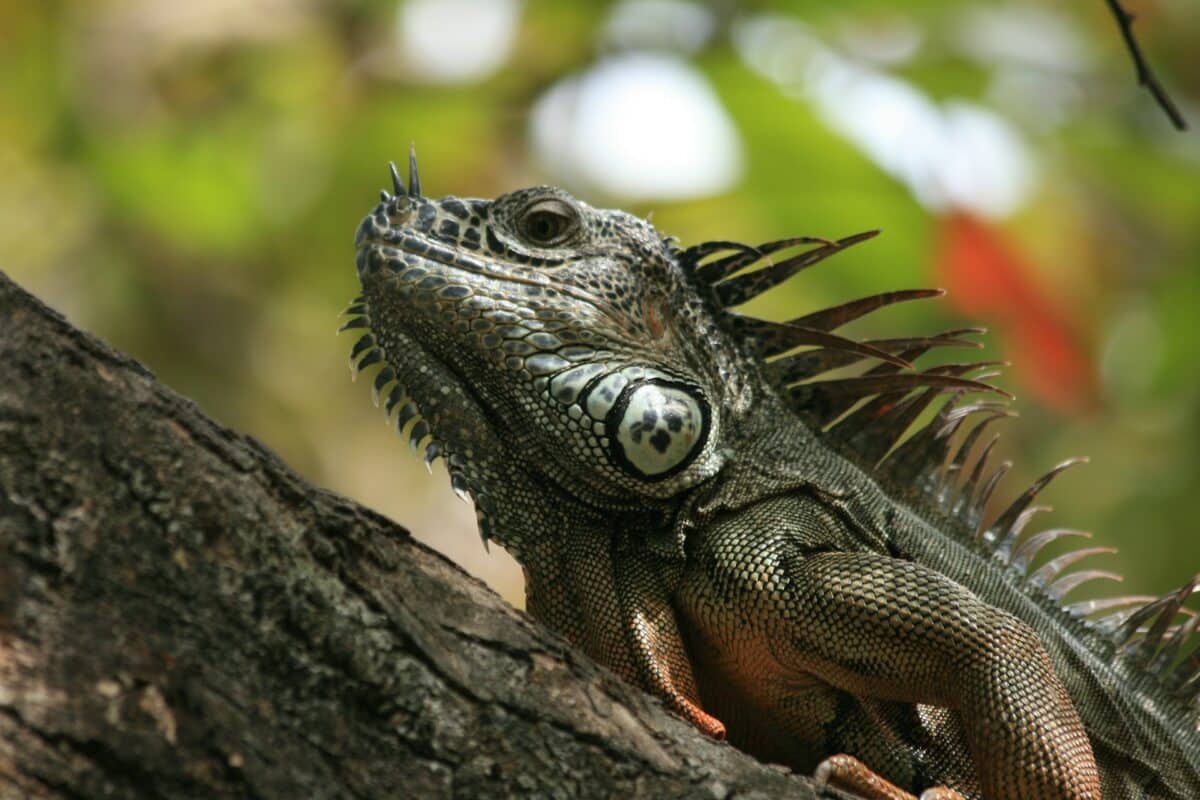
In terms of growth, spiny-tailed iguanas are relatively fast growers compared to other reptiles. During their first year, they undergo rapid growth, gaining several inches in length. However, their growth rate gradually slows down as they mature. In general, spiny-tailed iguanas reach their full adult size within the first three to four years of their lives.
Are Iguanas Poisonous?
Iguanas, commonly known as herbivorous reptiles, are not generally considered poisonous. While there are certain factors to consider regarding their potential harm, they do not possess venom or produce toxins that are harmful to humans.
Although iguanas are not venomous, it’s important to note that they can carry bacteria, such as Salmonella, which can cause illness in humans if proper hygiene measures are not followed after handling them or their feces.
Likewise, remember that while the spiny-tailed iguana bite may not be venomous, its bite can be painful and may result in injury or infection if not properly treated.
You might also like our post on different types of lizards.
Handling an Iguana Bite
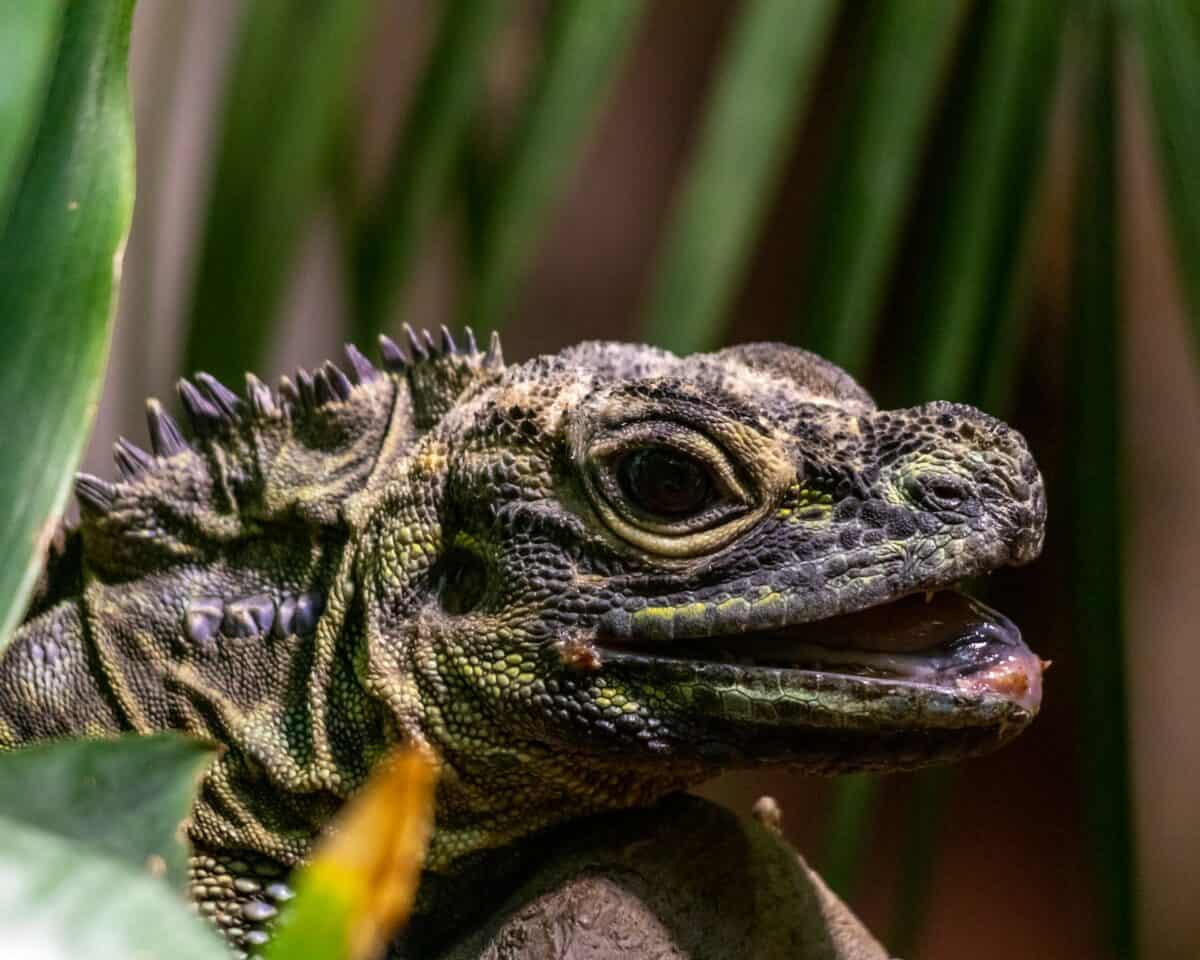
Iguanas are an excellent pet choice with their magnificent scales, prehistoric appearances, and docile nature. But it’s crucial to understand that they are still wild animals with a strong fight-or-flight instinct.
Their territorial instincts may kick in if provoked or startled, causing them to become aggressive and bite. The best approach to prevent an iguana bite is to understand their body language and take care of yourself if one occurs.
Warning Signs of an Impending Iguana Bite
Iguanas express their feelings through various behaviors and body language. Knowing and reacting to those signs correctly can prevent any unpleasant incidents. Here are some of the warning signals of an impending iguana bite;
- Hissing: As a defensive reaction, iguanas produce a hissing sound to warn their predator or handler to back off.
- Puffing Up: Puffing up is another defensive mechanism where iguanas can appear more significant and threatening.
- Flaring its Tail: When an iguana flicks its tail, it’s a warning that it’s unhappy with a particular situation, and it’s best to step away.
How to Handle an Iguana Bite Safely
In the event that you do receive an iguana bite, it’s essential to handle the situation calmly and correctly. Here are some guidelines to follow when dealing with an iguana bite.
1. Avoid the Iguana: Once an iguana bites, giving it some space to calm down is crucial. Do not approach or try to pick up the iguana immediately.
2. Keep the Iguana Away: It’s essential to keep the iguana away from your other pets and family members if it becomes more aggressive.
3. Use a Thick Glove or Towel: Use a thick towel or glove and gently but firmly remove the iguana from your body.
4. Clean the Wound: After removing the iguana, it’s crucial to clean the wound thoroughly and apply an antiseptic.
5. Seek Medical Attention: If the bite is severe, seeking medical attention is best, as iguana bites can lead to bacterial infections.
First Aid for an Iguana Bite
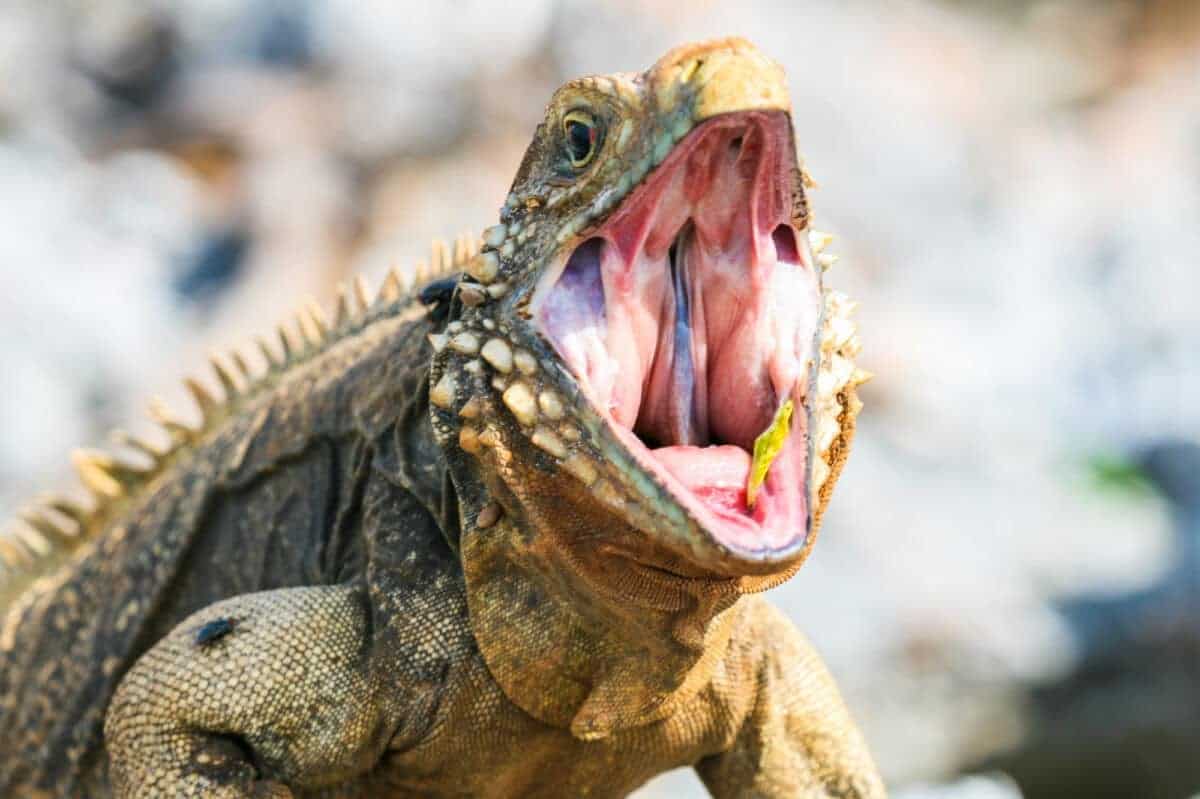
Iguanas are fascinating reptiles that are becoming increasingly popular as pets. However, just like any other animal, iguanas are capable of biting and causing harm to humans. If an iguana bites you, knowing how to care for the wound properly and when to seek medical attention is crucial.
Cleaning the Wound: The first thing to do after an iguana bite is to clean the wound. Use soap and water to wash the affected area gently. You can also disinfect the wound with an antiseptic solution like hydrogen peroxide or povidone-iodine. Removing any debris or dirt that may be stuck in the wound is essential to prevent the risk of infection.
Applying a Topical Antibiotic Ointment: After cleaning the wound, apply a topical ointment like Neosporin or Polysporin. This will provide some protection against bacterial infection and promote faster healing. Applying the ointment several times a day is recommended until the wound has fully healed.
Bandaging the Wound: If the wound is small, it may not require a bandage. However, if the bite is deep or bleeding, use gauze or a clean cloth to pressure the wound until the bleeding stops. Then, wrap the wound with sterile gauze and secure it with medical tape. This will protect the damage and prevent further contamination.
When to Seek Medical Help
- If the wound is deep – Iguanas have sharp teeth that can cause deep puncture wounds. Deep wounds are more susceptible to infection and may require stitches to promote faster healing. If the wound is deep or bleeding profusely, seek medical attention immediately.
- If the wound looks infected – Signs of infection include redness, swelling, warmth, and pus discharge. If you notice any of these signs, seeking medical attention as soon as possible is crucial. Infections can quickly spread and become severe, causing serious health issues.
Preventing Future Spiny-Tailed Iguana Bites
Reptiles are fascinating creatures but can also be dangerous if not handled with care. It is essential to understand their body language and behavior to prevent getting bitten in the future. Here are some tips to help you avoid getting bitten:
Handle Them Carefully
If you need to handle a reptile for any reason, it is vital to do so carefully. Use the proper equipment, such as gloves or tongs, to avoid direct contact with the animal. Remember never to pick up a reptile by its tail, as this can injure and cause it to bite.
When handling a reptile, move slowly and calmly. Sudden movements or loud noises can startle them and cause them to lash out. Finally, support the reptile’s weight correctly, as holding it incorrectly can cause discomfort and lead to a bite.
Maintain Their Habitat
Finally, it is vital to maintain your reptile’s habitat properly. Make sure the enclosure is the appropriate size and temperature for the species. Keep the enclosure clean and debris-free, as dirty environments can lead to disease and aggression.
Provide the reptile with plenty of hiding places and things to climb on, as this will help reduce stress and prevent aggressive behaviors. Regularly check your reptile for signs of illness or injury, as a sick reptile may be more likely to bite.
Spiny-Tailed Iguana Bite: Bottomline
In conclusion, the Spiny-tailed iguana bite is a serious matter that should not be taken lightly.
These reptiles have strong jaws and sharp teeth that can cause painful wounds and potentially severe infections. It is essential to exercise caution when handling or interacting with these animals, as their bites can result in various complications. If the bite is very deep, won’t stop bleeding, or shows signs of infection, seeking medical attention is necessary to ensure that prompt treatment is administered and any potential complications are promptly addressed.
In summary, Spiny-tailed iguanas are fascinating creatures, but it is essential to maintain a healthy respect for their potentially dangerous bites.
Thank you for reading this article! If you’re in the mood for more reptiles, you should check out our post about purple snakes, uncover the heaviest reptile in the world, or find out why the Burmese Python is causing havoc in Florida.
Join our Forum for free today!


